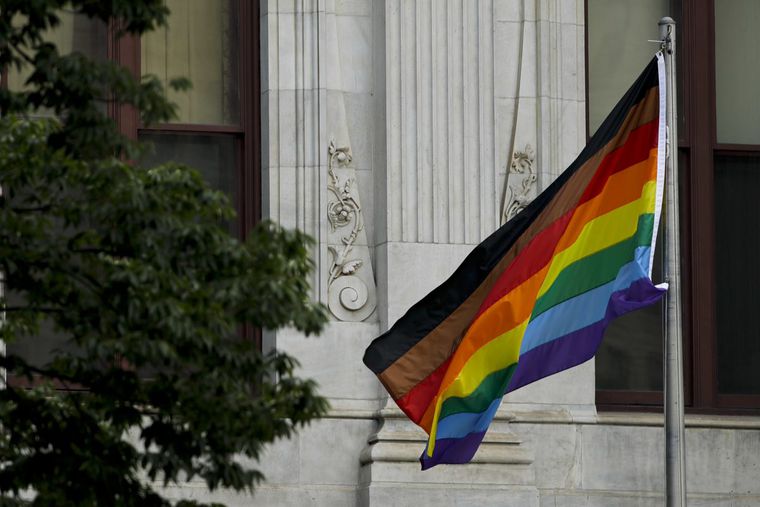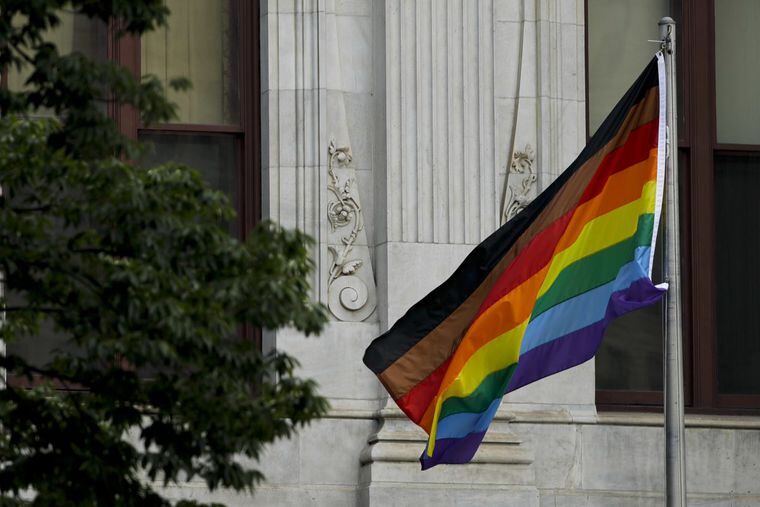

Each June, people in cities all over the world celebrate Pride month, and recognize the struggles, dreams, and accomplishments of the LGBTQ community throughout its journey to equality.
Pride month commemorates the 1969 riots at Stonewall Inn in New York, after police raided the bar and arrested many of its LGBTQ patrons. The community fought back and let their voices be heard, and it sparked a movement for equality, visibility and fair treatment for members of the LGBTQ community that continues today.
Here in Philadelphia, there’s lots to celebrate and recognize. The LGBTQ rights and liberation movement has had a long history here, from the historic Sit-Ins at Dewey’s restaurant in 1965, to the Annual Reminders at Independence Hall from 1965 to 1969, a precursor to today’s Pride marches.
» READ MORE: Find ways to celebrate in our 2021 Pride events calendar
But, at the same time, it’s important to remember that the fight is not over. In Pennsylvania, there’s an effort to ban transgender kids from playing sports. There’s no hate crime legislation for LGBTQ people. And violence continues, especially against Black trans women.
In 2017, Philadelphia took a bold step towards LGBTQ representation, with the introduction of the Philly Pride flag: Our own version of the popular six-colored-stripe rainbow Pride flag. The Philly Pride flag adds two new stripes — brown and black — to the top of the rainbow.
The flag put Philadelphia in the global spotlight, and it’s seen widespread use around the world since, appearing on Nike and Converse sneakers, in the second season finale of the FX show Pose, and more. Even the new “Everyone Is Awesome” Pride-themed LEGO set included black and brown stripes as part of its design.
But for a lot of people, the multiple variations of Pride flags may seem confusing. What does it mean? Why does it exist? If you have questions, you’re not alone, and we’re here to help.
Here’s a primer on Philly’s Pride flag.
Much like Pride itself, Philly’s flag — part of a city-wide “More Color More Pride” campaign — was borne of protest.
In 2016, after a number of high-profile stories exposing racism in Philly’s Gayborhood, people — especially people of color — started demanding more inclusion and intersectionality in Philly’s LGBTQ community. Both individuals and groups joined the call for change, when the neighborhood — a place that’s supposed to support and welcome LGBTQ people — was shown to be actively causing harm.
“We were not popular. It was not sexy, it was not glamorous,” says journalist Ernest Owens (he/him), who exposed much of the racism. “People forget that [the flag] was inspired by a small group of rebels and Black queer people that just really wanted to speak out against something that was impacting their lives.”
Icon Ebony-Fierce (they/she), a Philadelphia drag and burlesque performer, event manager and community activist, recalls how communities of color organized. “It was a collective effort of a lot of people in the community, including performers, that decided to make sure our voices get heard.”
The protests were not the first time that these problems had been raised. “For years, there were conversations about discrimination within the LGBTQ community. Specifically, discrimination in bars, in places of public accommodation, a lack of representation in the leadership of our community,” says Amber Hikes (they/them), former Executive Director of the Philadelphia Office of LGBT Affairs, and current Chief Equity and Inclusion Officer at the ACLU. “Not much had been done, for decades.”
The new flag was meant to recognize the legacy of that activism, and anchor inclusion as an essential part of Philly Pride, Hikes said. “How are we going to signify this time? What is something concrete — a concrete symbol — to mark this progress in our community, and again, these thirty plus years of conversation and advocacy.”
The Philly Pride flag we see today resulted from a partnership between Philadelphia’s Office of LGBT Affairs, and design agency Tierney.
The design was completed in May 2017, and unveiled during Pride celebrations in June. A number of activists who had fought for inclusion and intersectionality attended the flag raising ceremony.
Hikes says the design sparked hostile criticism from some corners, including from within the LGBTQ community. “We were talking about racism in the LGBTQ community and as a response to my introduction of the flag, I received racist death threats.”
There was also some criticism from within LGBTQ and activist circles, including that the flag did not properly recognize previous work that had been done, including a similar version created by the Black and Brown Workers Cooperative.
But the flag quickly went viral, and in the years since, it has been used in designs and celebrations from around the world. The flag was not patented or trademarked, so it’s free for anyone to use. “That is a reality that I never even envisioned for this flag. It is humbling, a little bit surreal,” Hikes said.
“It was absolutely intended to be Philadelphia-specific,” they said. “I think it speaks to the importance of the symbol, the significance of it, and the relevance of it: the way that it has truly resonated with so many different communities, identity groups and struggles around the world.”
The most commonly used Pride flag for many years has been the standard rainbow flag, designed in 1979 by Gilbert Baker (who’s sometimes known as “the gay Betsy Ross”). That flag includes six colored stripes, each with a specific meaning. Red means life; orange, healing; yellow, sunlight; green, nature; blue, serenity; purple, spirit.
On the Philly Pride flag, the black and brown stripes represented the Black and Latin communities.
The design met some criticism from people who argued that the original colors of the flag represented shared experiences of life, while the new colors signify specific communities.
But according to Hikes “the pushback … proved the point.”
Not at all. But it is one of the more popular ones right now. The Pride flag has had many different variations over the years, and there are three commonly used varieties right now in the United States, in addition to more specific flags (like the Trans Pride flag, for example).
First is Baker’s six-color rainbow flag, which has its own emoji, and became part of the design collection at the Museum of Modern Art in 2015.
The “More Color, More Pride” flag, commonly known as the Philly Pride flag, has been used around the world to recognize the importance of intersectionality with Pride.
More recently, there is a 2018 redesign by Portland designer Daniel Quasar, known as the “Progress Pride’’ flag. This flag also contains black and brown stripes, but they sit on the left in the shape of a chevron, along with the colors of the trans flag (light blue, pink and white).
According to Quasar, the flag signifies the forward momentum in the struggle to recognize the importance of people of color, trans and nonbinary folks, and those living with or lost to HIV/AIDS in the LGBTQ community.
If you want to show solidarity or support for the LGBTQ community — during Pride month or any other time of year — you have a lot of options.
One place to start: Learn more about the issues facing LGBTQ people in your community, and talk to people involved. ”Change is happening, and we have to be really receptive of it. Sometimes, just because it’s not your struggle, it [doesn’t mean it’s] not a struggle” says Vinchelle, drag queen and ‘Tri-State Tribal Queen.’
“Choose a flag that you feel represents you,” says Ebony-Fierce.”Don’t really worry about what other people say or think …. I feel like the focus should be your own journey, your own identity, and your own expression, and your own choice of a flag should always truly represent you”
“I embrace all kinds of variations of the flag, cause I feel like there’s something for everyone, and if something represents them best, I feel like that’s great.” they said.
“You know, Pride is Pride for me.”
Happy Pride.
Ben Deane (he/him) is a gay Philadelphia-based creative, passionate about LGBTQ issues and Marvel comic characters. He is the co-founder and co-lead of the Prism LGBTQ+ Employee Resource Group at the Inquirer, and spends his free time creating digital art, music and memories with his partner and dog in Point Breeze.
» READ MORE: Our best Philly tips: Read our most useful stories